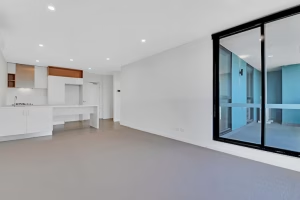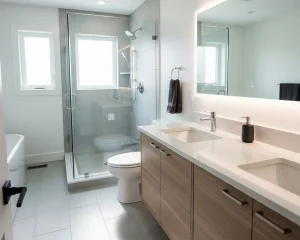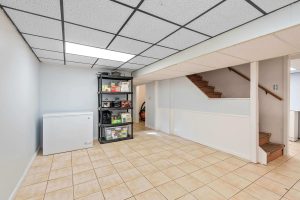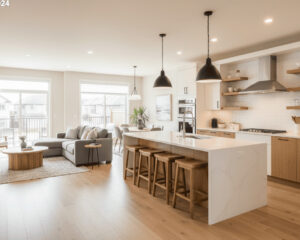If you’re planning a renovation in Edmonton and wondering how to budget for house renovation, you’re not alone. Budgeting is the single most important planning step; get it right and the project runs smoother; miss key items and the stress (and surprises) pile up. This guide walks you through practical, Edmonton-specific steps to build a realistic renovation budget, whether you’re updating a kitchen, renovating a bathroom, finishing a basement, or reworking your whole home.
You’ll learn how to set priorities, create budget categories, include permit and contingency allowances, compare contractor estimates, and protect value by choosing the right materials and trade sequencing. I’ll also share local references, reliable resources, and examples from Steadfast Constructions Ltd., so you can move from idea to plan with confidence.
Begin with clear goals and priorities.
Budgeting starts with clarity. Before you think about numbers, decide what you want your renovation to deliver.
Define outcomes and priorities.
- Describe the main purpose: improved function, modern look, accessibility, rental income, or preparing to sell.
- List must-haves versus nice-to-haves. Must-haves are items you won’t compromise on; nice-to-haves can be deferred or swapped for less costly options.
- Consider who will live in the home and how long you plan to stay. Long-term homeowners often prioritize durability and energy efficiency; short-term sellers often focus on broad visual appeal.
Clear priorities let you allocate budget where it matters most. For example, placing ventilation, waterproofing, and durable finishes high on the list prevents expensive call-backs later—especially in Edmonton’s seasonal climate.
Break the project into budget categories.
Treat budgeting as a checklist of categories rather than one lump number. This makes comparisons and trade-offs simpler.
Common budget categories
- Design and permits: drawings, engineering (if needed), and permit fees. Permits are required for many changes and protect resale. City of Edmonton
- Site preparation and demolition: safe removal of finishes and dealing with any discovered issues.
- Structural and trades: framing, plumbing, electrical, HVAC, and gas work, which require licensed trades and trade permits. Government of Nova Scotia
- Waterproofing and building physics: membranes, vapour control, insulation, critical in basements and bathrooms. Referencing a “house-as-a-system” approach avoids costly moisture problems. Government of Canada Publications
- Fixtures and finishes: cabinets, countertops, flooring, tile, paint, and lighting.
- Contingency: an allowance for hidden issues or scope changes, essential because demolition often reveals surprises.
- Project management and cleanup: contractor coordination, site cleanup, and final handover documentation.
Breaking the budget into these buckets helps you prioritize and see where savings or upgrades will have the biggest impact.
Factor permits, inspections, and documentation
Permits and inspections matter in Edmonton. Not all small changes require a permit, but anything that affects structure, plumbing, electrical, gas, or adds bedrooms usually will. Starting work without the right permits can lead to stop-work orders and costly rework. Use the City of Edmonton’s residential permit guidance early in your planning to identify permit triggers. City of Edmonton
Include permit-related costs in your plan
- Plan for design drawings and the time to respond to plan-check comments. The City lists submission requirements and common permit triggers; consult these before finalizing plans. City of Edmonton
- Remember that trade permits for electrical, plumbing, and gas require licensed trades; contractors usually include permit coordination in their proposals.
Including permit effort and documentation in your budget avoids last-minute surprises.
Plan for contingencies and hidden issues
Hidden issues are the most common cause of budget creep: old wiring, corroded plumbing, rot, or structural changes discovered once walls come down. Treat a contingency as a planning tool—not a target to be spent immediately.
Practical contingency planning
- Build a contingency category into your budget and decide up front how changes are approved. A transparent change-order process avoids disputes.
- Ask your contractor how they handle unforeseen conditions and how you’ll be notified and priced for additional work.
Good contractors like Steadfast Constructions Ltd. document hidden conditions and present clear options so you remain in control of scope and budget.
Financing and payment planning (no cost figures)
You may fund a renovation from savings, home equity products, personal loans, or lender programs. Regardless of the source, plan cash flow so vendor deposits, material orders, and trades are covered at the right times. Lenders and CMHC resources outline financing options that homeowners can review with their financial advisors. Government of Canada Publications
Organize payment milestones
- Agree on a payment schedule with your contractor that ties installments to deliverables or inspection milestones.
- Avoid large up-front cash-only payments; reputable contractors provide clear invoices and trackable payments.
- Keep receipts and contracts; these documents matter if you use financing and for future resale.
A clear payment plan reduces stress and keeps trade scheduling predictable.
Get accurate estimates and compare bids.
Comparing multiple bids is the best way to test assumptions and refine your budget.
How to compare contractor proposals
Ask for itemized proposals that separate trades, materials, and allowances. When reviewing proposals:
- Check whether permits and inspections are included.
- Confirm which licensed trades are used and whether warranties are provided.
- Ask for a schedule and inspection milestones.
- Compare scope line-by-line—different wording hides different inclusions.
A detailed comparison helps you spot omissions or inflated allowances. Steadfast Constructions provides itemized scopes and supports homeowners through the bid-comparison process.
Prioritize savings that don’t sacrifice quality.
You can make smart decisions that reduce the budget without compromising long-term performance.
Value-driven choices
- Keep plumbing and electrical in the same general location where possible—moving service lines increases complexity.
- Choose durable finishes in high-use areas (floors, entryways, work zones) and consider more economical accents elsewhere.
- Buy standard-size products where possible; custom sizes generally increase lead times and complexity.
- Choose long-lasting systems (ventilation, waterproofing) over the cheapest short-term option—this avoids expensive repairs later.
Value engineering means making choices that reduce initial outlays while protecting long-term function.
Materials, lead times, and scheduling
Material choice affects both budget and schedule. Some finishes and fixtures have longer lead times that can delay a project if not ordered early.
Manage lead times and order windows.
- Identify long-lead items (custom cabinetry, slab countertops, specialty lighting) early and place orders after design sign-off.
- Confirm return and substitution policies in case suppliers face delays.
- Coordinate material deliveries to align with trade schedules; staggered deliveries reduce storage issues on site.
Good project scheduling reduces costly downtime and keeps workers focused on progress.
Local considerations for Edmonton homeowners
Edmonton’s climate, cold winters, freeze-thaw cycles, and salt exposure affect material performance and renovation sequencing.
Choose materials for local performance.
- Use engineered cabinetry cores and sealed finishes to reduce seasonal movement in doors.
- Choose resilient flooring at entries and mudrooms that tolerate grit and moisture.
- Ensure mechanical ventilation and exhausts are correctly sized and routed for winter performance.
Local knowledge from contractors who work across Edmonton neighbourhoods helps you choose durable, low-maintenance assemblies.
Phased renovations as a budgeting strategy
If your scope or finances make a full renovation impractical now, phased work is a sensible approach.
Plan meaningful phases
- Phase 1: core systems and waterproofing, fix structure, plumbing, and ventilation first.
- Phase 2: major functional upgrades—kitchen or bathroom layouts and fixtures.
- Phase 3: cosmetic finishes and final details.
Phasing can spread obligations over time while protecting home performance. Just plan each phase so that temporary work doesn’t require redoing completed areas.
Protect value with documentation and warranties.
Keep records for future resale and maintenance.
Collect a project binder.
- Keep permit approvals and inspection sign-offs.
- Store installer warranties and product manuals.
- Document before-and-after photos and any as-built changes.
Steadfast Constructions delivers a handover package with permits, warranties, and maintenance guidance so homeowners have everything in one place.
Use data and local trends to inform decisions.
Renovation price trends and local supply conditions affect timelines and planning. Statistics Canada’s Residential Renovation Price Index shows price trends across regions and project types—use these insights to set realistic expectations around market conditions and lead times.
Timing your project to market conditions
- If renovation activity in the region is high, lead times and scheduling windows can be longer.
- Early procurement and selecting reputable local suppliers help insulate projects from sudden supply disruptions.
A contractor familiar with Edmonton’s supplier network makes these timing decisions easier.
Real-world example (planning-focused)
A family in a mature Edmonton neighbourhood wanted to modernize their kitchen and add a powder room. Their priorities were improved flow and durable finishes. The project plan focused on:
- Keeping the main plumbing wall in place to avoid costly rerouting.
- Upgrading ventilation and adding insulation where needed to address cold exterior walls.
- Ordering cabinetry and long-lead fixtures early to align with trade schedules.
- Setting a contingency and a clear change-order approval workflow.
The focus on priorities, early ordering, and clear contractor communication kept the project predictable and reduced stress for the family.
Final checklist before you start
- Define goals and priorities so the budget reflects what matters.
- Create a budget by category: design/permits, trades, waterproofing, finishes, contingency.
- Confirm permit triggers and include permit tasks in your timeline.
- Collect multiple itemized proposals and compare scopes line-by-line.
- Plan for long-lead items and order them early to avoid delays.
- Keep a contingency and an agreed change-order approval process.
- Gather final documentation permits, inspections, and warranties at handover.
Conclusion
Learning how to budget for house renovation in Edmonton means combining clear goals, realistic planning, and local knowledge. Break your project into categories, include permits and contingencies, order long-lead items early, and choose durable materials that perform in Alberta’s climate. Vet contractors carefully and ask for itemized proposals, proof of licensing, and a documented change-order process.
Steadfast Constructions Ltd. helps Edmonton homeowners at every step: site assessments, permit-ready drawings, licensed-trade coordination, project scheduling, and final handover with documentation. If you’re ready to turn an idea into a practical, budget-aware plan, contact Steadfast Constructions Ltd. for a consultation. We’ll help you prioritize, plan procurement, and create a realistic budget that protects your home and reduces surprises.
Frequently Asked Questions (FAQs)
Q1: How do I begin to budget for a house renovation in Edmonton?
A1: Start by defining your goals and priorities, then break the project into budget categories (design and permits; trades; waterproofing; finishes; contingency). Confirm permit triggers early and get multiple itemized proposals from licensed contractors to compare scopes.
Q2: Should I include a contingency when I budget for a house renovation?
A2: Yes. Contingency planning is essential because demolition often reveals hidden issues. Decide up front how change orders will be approved to keep control over spending.
Q3: Do I need to budget for permits and inspections?
A3: Yes. Many renovations in Edmonton require building permits and trade permits (plumbing, electrical, and gas). Include design and permit effort in your budget and timeline.
Q4: How can I save money without sacrificing quality on a renovation?
A4: Prioritize durable systems (ventilation, waterproofing), keep plumbing and electrical in existing locations when practical, choose standard-size products, and delay non-essential cosmetic upgrades to later phases.
Q5: How do local market conditions affect my renovation budget?
A5: Regional renovation activity and supplier lead times influence scheduling and material availability. Use national and local renovation indicators to plan for potential delays and order long-lead items early.







